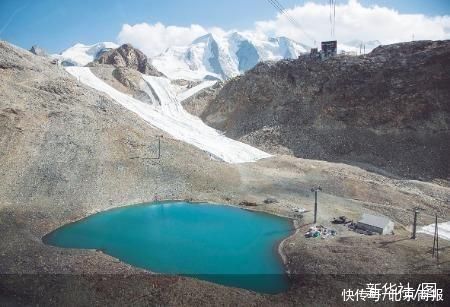Since last winter, the Alps have experienced two early summer heat waves. In July, temperatures in Zermatt, a ski resort in the Valais canton in southwestern Switzerland, were close to 30 degrees Celsius, causing the snow line in the local mountains to retreat to a record high of 5,184 meters above sea level, while the normal snow line in summer is between 3,000 and 3,500 meters above sea level. .
According to foreign media reports, the Alps experienced less snowfall than usual last winter and suffered two heat waves since the beginning of summer. Skiing, hiking and other activities are restricted in some areas due to rising local temperatures that may lead to insufficient snowfall and melting glaciers.

An Alpine ski resort in Pontresina, Switzerland. Xinhua News Agency/Photo
Data provided by Reuters shows that the Moltracht Glacier in Switzerland is currently retreating about 5 centimeters a day, and the current position of the glacier tongue has retreated compared with the position recorded on the local tourist map. Nearly 2 miles (3 kilometers), while the glacier has lost 656 feet (200 meters) of thickness. The nearby Silvretta Glacier retreated about 3.3 feet (1 meter) from the same point in 1947. The snow and ice on the Chihota Higri Glacier has largely disappeared.
Recently, the famous ski resort of Switzerland’s Matterhorn in the Alps has suspended skiing activities because the local temperature rise may lead to insufficient snow. Matterhorn ski lift operators suspend summer skiing from July 29, but maintenance work on slopes and transport facilities continues. According to the German news agency, the high temperature of the peak of more than 4,000 meters above sea level means that the precipitation may change from snow in previous summers to rain.
If the weather turns cold and there is sufficient snow, the local area will resume hosting ski team training and recreational skiing activities.
Alpine temperatures are rising by about 0.3 degrees Celsius every 10 years, about twice the global average. If greenhouse gas emissions continue to rise, the size of Alpine glaciers is expected to be reduced by more than 80% by 2100.
Beijing Business Daily Comprehensive Report